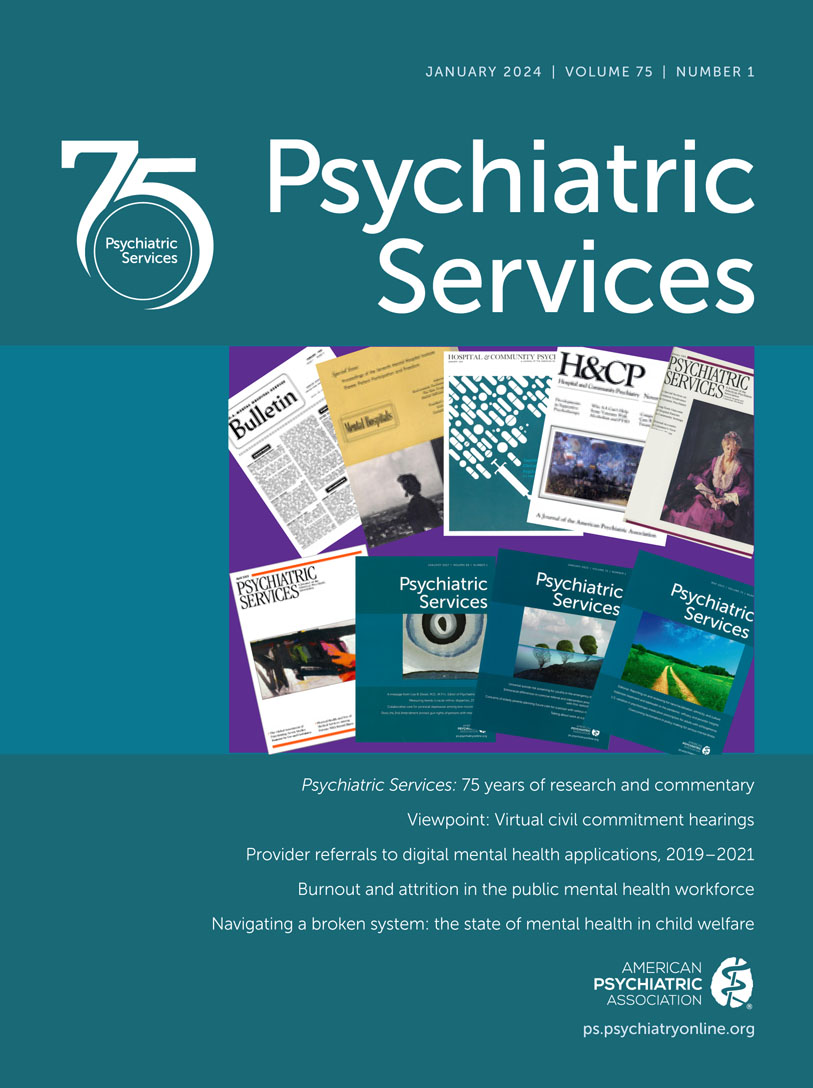Trends in Opioid Use Disorder Outpatient Treatment and Telehealth Utilization Before and During the COVID-19 Pandemic
Abstract
Objective:
The authors examined trends in opioid use disorder treatment and in-person and telehealth modalities before and after COVID-19 pandemic onset among patients who had received treatment prepandemic.
Methods:
The sample included 13,113 adults with commercial insurance or Medicare Advantage and receiving opioid use disorder treatment between March 2018 and February 2019. Trends in opioid use disorder outpatient treatment, treatment with medications for opioid use disorder (MOUD), and in-person and telehealth modalities were examined 1 year before pandemic onset and 2 years after (March 2019–February 2022).
Results:
From March 2019 to February 2022, the proportion of patients with opioid use disorder outpatient and MOUD visits declined by 2.8 and 0.3 percentage points, respectively. Prepandemic, 98.6% of outpatient visits were in person; after pandemic onset, at least 34.9% of patients received outpatient care via telehealth.
Conclusions:
Disruptions in opioid use disorder outpatient and MOUD treatments were marginal during the pandemic, possibly because of increased telehealth utilization.
Access content
To read the fulltext, please use one of the options below to sign in or purchase access.- Personal login
- Institutional Login
- Sign in via OpenAthens
- Register for access
-
Please login/register if you wish to pair your device and check access availability.
Not a subscriber?
PsychiatryOnline subscription options offer access to the DSM-5 library, books, journals, CME, and patient resources. This all-in-one virtual library provides psychiatrists and mental health professionals with key resources for diagnosis, treatment, research, and professional development.
Need more help? PsychiatryOnline Customer Service may be reached by emailing [email protected] or by calling 800-368-5777 (in the U.S.) or 703-907-7322 (outside the U.S.).



